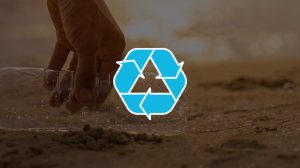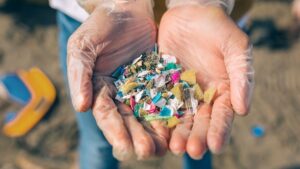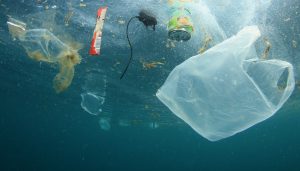Scientists gather to study risk from microplastic pollution
Tiny bits of broken-down plastic smaller than a fraction of a grain of riceare turning up everywhere in oceans, from the water tothe guts of fish and the poop of sea otters and giant killer whales.
Yet little is known about the effects of these “microplastics”—onsea creatures or humans.
“It’s such a huge endeavor to know how bad it is,” said Shawn Larson, curator of conservation research at the Seattle Aquarium. “We’re just starting to get a finger on the pulse.”
This week, a group of five-dozen microplastics researchers from major universities, government agencies, tribes, aquariums, environmental groups and even water sanitation districts across the U.S. West is gathering in Bremerton, Washington, to tackle the issue. The goal is to create a mathematical risk assessment for microplastic pollution in the region similar to predictions used to game out responses to major natural disasters such as earthquakes.
Research into their potential impact on everything from tiny single-celled organisms to larger mammals like sea otters is just getting underway.
“This is an alarm bell that’s going to ring loud and strong,” said Stacey Harper, an associate professor at Oregon State University who helped organize the conference. “We’re first going to prioritize who it is that we’re concerned about protecting: what organisms, what endangered species, what regions. And that will help us hone in … and determine the data we need to do a risk assessment.”
Some of the concern stems from an unusual twist unique to plastic pollution. Because plastic is made from fossil fuels and contains hydrocarbons, it attracts and absorbs other pollutants in the water, such as PCBs and pesticides, said Andrew Mason, the Pacific Northwest regional coordinator for the National Oceanic and Atmospheric Administration’s marine debris program.
“There’s a lot of research that still needs to be done, but these plastics have the ability to mine harmful chemicals that are in the environment. They can accumulate them,” said Mason. “Everything, as it goes up toward the top, it just gets more and more and the umbrella gets wider. And who sits at the top of the food chain? We do. That’s why these researchers are coming together, because this is a growing problem, and we need to understand those effects.”
Read the full and original article at Phys.Org



